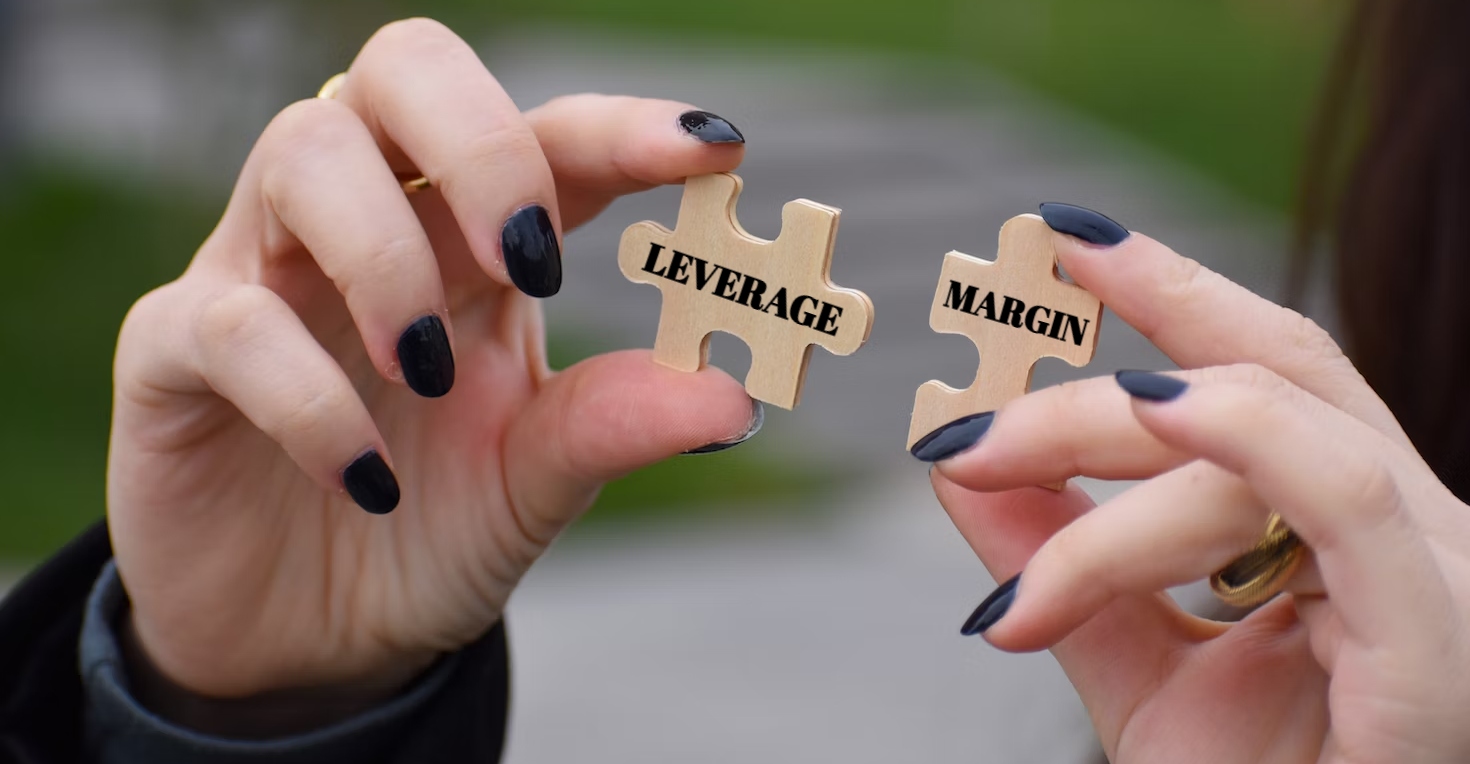
What is the difference between Forex leverage and margin?
Forex leverage and margin are two closely related topics, among the most difficult to understand when you are starting out as a trader.
What is the difference between these two instruments?
For the purposes of Forex trading, it is important to know the functioning and the difference between these two tools as they allow you to not only maximize profits, but also losses.
More inexperienced traders will therefore have to be very careful not to use them incorrectly.
Difference between leverage and margin
Below, we clarify what Forex leverage and margin is and how it works. We will also see in a very simple way what the difference is with the margin and why it is important in Forex trading.
What is leverage?
Leverage is the mechanism by which brokers allow us to invest more money than we have in our trading account.
If, for example, a broker allows us to use a leverage of 1 to 100 (1:100), it means that we could invest an equivalent of $100,000, with an account of only $1,000.
Even when we go to the bank to take out a mortgage to buy a house, we are actually using financial leverage! In fact, the bank “lends” us money that we don’t have, on which we will pay interest.
If, for a property, the bank generally requests that at least 20% be paid “as a guarantee”, effectively allowing us to use a leverage of 1 to 5 (100% divided by 20% = 5), in trading platforms it is possible to exploit a much higher leverage, in some cases even higher than 100.
While leverage can amplify profits, it also increases risk. A small adverse price move can lead to significant losses, often exceeding your initial investment. Therefore, using leverage requires careful risk management and a clear trading strategy.
What is margin?
Margin is the amount that the broker requires you to have in your account in order to execute a trade.
Margin and leverage are related, as leverage is an effect of the margin required by the broker.
In fact, if to carry out a transaction with a value of $100,000, the broker asks us to have at least $1,000 in the account, in fact he is giving us the possibility to use a leverage of 1 to 100 ($1,000,000 divided by $1,000 = 100).
As the trade moves in your favor, the margin is effectively ‘locked up’ but can be used for additional trades. If the trade goes against you, the broker may issue a margin call, requiring you to deposit more funds to cover potential losses or close the trade.
Here are some common leverages that brokers offer with their respective margin:
| Maximum Leverage | Margin Required |
| 20:01 | 5.00% |
| 33:1 | 3.00% |
| 50:1 | 2.00% |
| 100:1 | 1.00% |
| 200:1 | 0.50% |
| 400:1 | 0.25% |
Observing the values in the table, it can be seen that the Forex leverage and margin are inversely proportional: the higher the leverage, the lower the required margin; conversely, the lower the leverage, the greater the required margin.
Key differences:
- Purpose:
- Leverage amplifies both profits and losses by allowing you to control larger positions with a smaller amount of capital.
- Margin is the actual capital you must have in your account to open and maintain a leveraged position.
- Expression:
- Leverage is expressed as a ratio (e.g., 100:1) and indicates how much you can control relative to your capital.
- Margin is expressed as a percentage (e.g., 1%) and represents the required amount of capital as a portion of the total trade size.
- Risk:
- High leverage increases profit potential but also the risk of significant losses.
- Margin represents the funds at risk in a leveraged trade.
- Role:
- Leverage is a tool to magnify trading capacity.
- Margin is a security deposit to ensure traders can cover potential losses.
Forex leverage and margin: why does it matter?
We have seen that the Leverage and margin are two closely related instruments: the leverage effect also determines the margin and the amount of the margin determines the value of the leverage effect. In essence, the margin serves as a guarantee in case a transaction is carried out using leverage.
When you open a market position, you need to have some margin available (i.e. money) in your account so that any loss can be “covered”.
Continuing the previous example, to control a $100,000 position your broker will set aside $1,000 from your account or 1% (leverage 1:100) to enable you to open the position.
The initial deposit of $1,000 therefore represents the entire margin that one had to give in order to use leverage.
The amount that remains in the account after deducting the required margin and taking into account the profits and/or losses of open positions is called usable margin and can be used to open new positions.
Obviously, by opening more positions at the same time we will have that the used margin will increase and the usable one will decrease.
If the usable margin reaches zero, the margin call is triggered, i.e. a request to supplement the margin, with the risk that the broker may automatically close the open position(s) to prevent losses.
Take away
Now, perhaps, you’ve clearly understood the difference between Forex leverage and margin. In fact, the risk is that of opening too many positions that are too large compared to one’s account and of incurring the margin call.
As we have seen, by opening a position incorrectly, without considering leverage and margin, you could seriously endanger your entire portfolio.
To avoid such a result, we advise that you respect the rules of money management which, in general, impose never to risk more than 2/3% per position of your entire capital.
